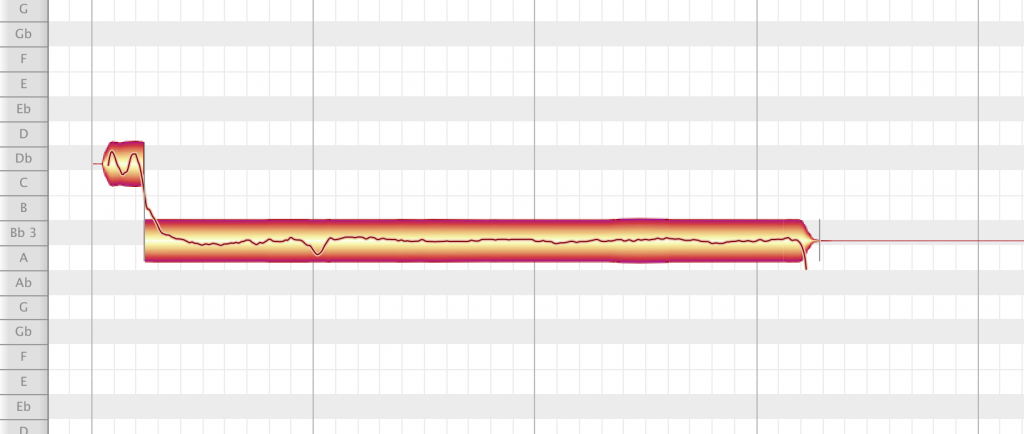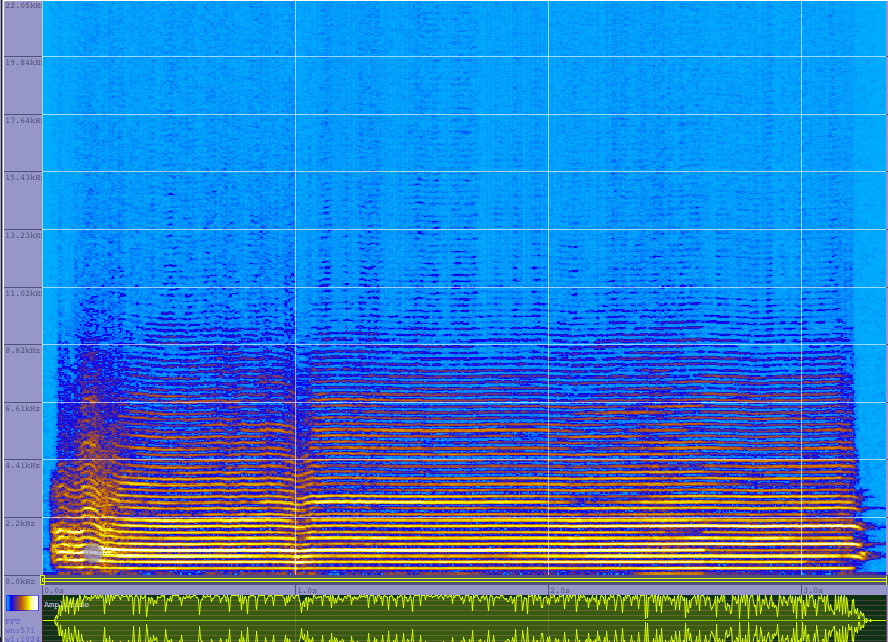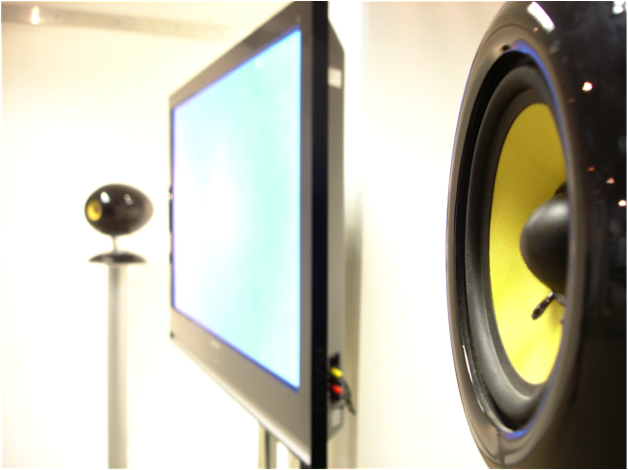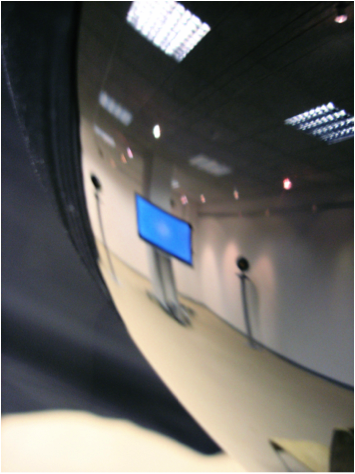In addition to playing over static minor and dominant chords, the ability to play over static major chords
in all positions of the fretboard is extremely useful. This have been kept fairly neutral. avoiding too much
differentiation between Ionian and Lydian so that these can be used on most instances of static major chords.
Learning and composing Major scale patterns like these (together with the Dominant and minor examples) will greatly
enhance the harmonic proficiency in your playing, and creative freedom in improvisation. Endless Lines III on Static Major Chords
Category: Music
Continuing from the last study, let’s take a CAGED approach to the minor or minor 7 chord. This will involve
Dorian, Melodic Minor, Aeolian, Dorian bebop, Minor blues and other bebop devices. A Dorian key signature
is given as this is a central modal component in a lot of static minor chord playing.
These have been written as continuous studies so repeat each section and move on at will for an epic workout.
Again we focus on a quaver feel,but remember that once absorbed these can be endlessly shuffled and lego-ed
in creative performance. Note also that these can work well on there related dominant chord (F7 in this case).
Be sure to visualise the underlying chord-shapes and arpeggios, practise in various keys, styles and tempos to
make them an intuitive part of your playing.
Endless Lines II on Static Minor Chords
A real challenge in playing jazz guitar lies in the performance of long seamless lines. This of course is only
a small component of improvisation, but it’s worth working on, as the sort of motor control and brain-finger
connection has to be really developed. Using the CAGED system established previously, we’ll look at playing
over static dominant chord. This will largely use dominant, bebop dominant, lydian dominant with typical
bebop devices. Rather than runing scales, these (somewhat abritrary but effective) 4-bar phrases cover much
of each position and require a comprehensive understanding of fretboard harmony. Of course these can be
edited, recomposed, transposed, and lego-ed endlessly.
Endless Lines I – Static Dominant Chord
Following on from the challenge in the last post – developing ii-V-I vocabulary all over the fingerboard – the following study takes a similar approach for minor ii-V-i patterns, for example Dm7(b5) – G7alt – Cm7. This will greatly enhance useful vocabulary. Furthermore all of the G7alt material may be readily used in a major ii-V context, and as ever these ideas can be broken up, restructured, shuffled, edited, sequenced and recombined for further editing. As a child I preferred Lego and Meccano to Playmobile and ActionMan. This is because with Lego and Meccano’s smaller and endlessly interconnectable units far more was possible, and the creative imagination had far freer scope; and partly because my ActionMan had missing fingers and only one of his eagle eyes moved.
One should adopt a Lego approach here, but just make sure you put them away when you’re finished.
The following short document uses an approach that provides 40 useful ii-V-I lines in every position of the guitar fingerboard, greatly aiding fluency of long improvised lines through jazz harmony. Hard work, but big returns. As ever, enjoy the process of practising and earn the resulting creative freedom. Yeah.
Unlike the piano, the ability of playing a simultaneous bass line and chord progression on the guitar is hard won.
However, with some focused work on fretboard harmony, an effective, intuitively controlled and fun approach is possible.
The following document provides an introduction to the technique – and some patient practice will go a long way. Enjoy
In Two Minds: Harmonic Literacy for the Guitar IV – Walking Bass & Chords
Lårs & Marïse at geek pop
The randomly ümlauted pandinavian musical duo at the virtual geek pop festival!
Here’s a short video of my (gorgeous) cousin Maria-Christina (Winner of the Wales International Harp Competition) on harp and electronics.
[youtube=http://www.youtube.com/watch?v=U4bopHmiTVE&w=640&h=390]
Under-rehearsed but overly fun performance with George Hrab at Surrey SkepSoc.
QED: Question.Explore.Discover
Here’s the promo for the wonderful #QEDcon Conference I’m attending 5-6 Feb 2011 http://qedcon.org
I wrote this little tune, and 7 musicians from around the world (George Hrab (Bethlehem, UK), Bridget (London,UK), John Gregson (Wimbledon), Steve Hamilton (Edinburgh), jonotrumpeto (UK), Halone (Finland) and me) contributed instruments, while Kylie Sturgess & Dave Fregon (Australia) and Mike Hall (UK) rinsed the visuals. This all had a nice sense of community (spirit not work) about it. Full report following QED.
Phibonacci nova
So, as you know, the universe had a big bloody gaping bossa-nova-tune-about-the-fibonacci-series-shaped hole in it, so for the sake of humanity I most humbly filled it.
Since its composition, an imminent geek-pop song writing competition deadline was discovered, which spurred the song’s hurried 2-hour recording session, with the multi-talented and accommodating musical genius, Bridget – more known for her phenomenal eclectic guitar skills than her (equally impressive) vocal work, she did a perfect job of capturing that Astrud Gilbertian vibe, and added some cool melodic and harmonic ideas.
[Did it win? Well not in the traditional sense, not even in a post-modern sense. Speaking completely without bitterness, the whole competition was entirely rigged and a conspiracy designed since the birth of David Icke to try and upset me. No mention of the self-self-referencing, the clever Phi-Phib-Phibona-Fibonacci line, the cute idiomatic harmony- NOTHING.]
***EDIT! The previous bracketed paragraph is an (unintentional) house of lies. I did in fact discover in my junk folder, a nice message explaining that despite the song’s brilliance, it was out-brillianted by others (you can hear the winning song at the end of this podcast) and maybe we can do something in the future. Although my comments here were intended to amuse and to poke fun at only myself, it’s not true that they didn’t respond – so that inaccuracy is hereby rectified.***
Still- as a phoenix– I rise above it all like David Blaine’s little trick when everyone has to line up behind him, and he uses that contraption to lift him a few inches. “Watch..”
Anyhow, I know YOU will get something out of it, because you’re one of the special chosen people who are smart and funny and brilliant, and have you been working out? – because I’m sorry if this is forward – but you ARE looking rather hot these days.
Here she is:
And the lyrics:
Phi-bonacci Nova
©2010 Milton Mermikides (no touchy)
Ph-Ph-Phi Fib –Fibo –Fibonacci- Fibonacci Series
0, 1, 1, 2, 3, 5, 8, 13, 21, (34, 55)
When you add the last 2 numbers together, (Given zero and 1)
A beautiful sequence emerges that goes on for ever. (quite a long time)
Did Fibonacci know that when,
You add n-1 to n
A pattern is born that’s found all around us?
Leaves, ferns, pineapples
Pyramids, cathedrals
The evidence is oversold
But we all love a rectangle of Gold. *(Gold) *[5/8 the way through the tune]
Phi- Fib –Fibo –Fibonacci- Fibonacci Series
0, 1, 1, 2, 3, 5, 8, 13, 21, (34, 55)
89. 144, 233, 377. Six hundred and ten
On and on (on an on)
[Repeat cumulatively]
In the midst of the chaos, mania and staggering bolshiness of the World Cup is an instrument that is chaotic, manic and bolshy. The marmite of the horn family, the dreaded vuvuzela.
The vuvuzela (I prefer vuvuzilla), let’s face it, is a monstrous instrument. And those that say they like it, are actually enjoying the effect it induces in others rather than loving its intrinsic sound.
Why does it sound so horrendous? Well firstly, it is loud, a staggering 120dB(A) at the bell-end. Can you imagine having to stand right in front of that bell-end, while someone is blowing it hard?
But a trumpet is equally loud, but does not elicit such an eargag reflex, so what’s the problem?
Firstly, it produces only one note with any consistency, a B-flat (Bb3 just below middle-C on the piano, around 233Hz). Technically, monotonous. However there is a microtonal wobble on this note so that it actually wavers around 210-240Hz range, Actually I’ve heard, presumably in the mouth of a particularly exuberant bell-end, the pitch drop up to a perfect 4th below. (See figure 1)
Figure 1. A particularly pissy vivuzela caught fucking around the 233Hz mark. Note its untrustworthy slow glides and sudden pitch disruptions. Bastard.
This, en-masse, contributes to the siren-like, ominous swarming drone, however the fluctuating pitch is not where the irritation lies.The big problem, my bell-end blowing friend, is the overtones.
What are overtones? Well… every sound is actually made up of not just a fundamental pitch but a series of higher pitches called overtones, that make up its particular tonal character, or timbre. (The only sound with only a fundamental with no overtones is the sine wave, that pure test-tone sound, to which a tuning fork comes close to emulating)
Some overtones are harmonic, they exist at regular frequency intervals to the fundamental. Like 2/1, 3/2. 4/1, 5/2 etc. These make up ‘musical’ intervals above the fundamental pitch like octaves, fifths, major 3rds and so on. Musical instruments that are pitched tend to possess mainly harmonic overtones.
Overtones that have no simple relationship to the fundamental are non-harmonic and contribute to a noisy timbre. A crash cymbal for example, has a smear of close intervals heading up to the top of our hearing range. The most non-harmonic, or noisiest sound is white noise, which is like a random waveform containing all overtones at random amplitudes. Think the sound of constant static, or in nature, a noisy seashore.
Actually musical instruments contain a complex, dynamic combination of overtones. A piano for example has a smattering of non-harmonic overtones at the initial ‘click’ but quickly settles into a regular harmonic pattern. A violin has beautifully regular overtones heading up into the stratosphere, mixed with a bunch of crazily chaotic non-harmonic high overtones.
The vuvuzela, however is an odd frog. It has a simple and regular pattern of overtones but they don’t match harmonic overtones. So it masquerades as a ‘musical’ instrument but is actually noisy, without the decency of being part of the percussion family (a highly respected family, incidentally, despite you know, the rumours) So what you get is the impression of musicality but the effect of irritation. (Figure 2) It’s like false advertising. We are trained to expect a musical timbre when you hear regular intervals but we get is the death-knell rasp of 10,000 kazoos in a giant blender.
Figure 2. Look at those sneaky regular intervals, pretending to be harmonic. Bloody Charlatans. And look how fucking high they go.
So what good is the vuvuzela other than giving a clear “Hey look at me blowing my bell-end!” message. Can it be used musically? Well I leave you with some half-hearted attempts to depict a parallel musical universe where the vuvuzela holds equal esteem to the violin, piano, cello, trumpet and human voice. Enjoy.
So in a ballad, perhaps? (Led Vuvuzeppelin)
Or more dramatically: (Vu-thousand-and-one)
Alas, I have found but one place where it really works. (Voot’s Theme)
Any requests?
The dust, and glitter, have settled on the saccharin post-ironic campfest that is Eurovision.
I’ve witnessed the spectacle a number of years, find it quite enjoyable, and admire some of the songs and flamboyance. However there is this amazing middle-ground of songs between the quite good and deliciously terrible. A luke-warm competence of song that is just utterly ok, which I find fascinating. How, and why do these songs jump all the hurdles to make it to the final? The answer? They are perfectly accessible and completely musically unchallenging. Not bad at all, not good at all, not anything at all.
Would you like to write one of these super-mega-normal bet-hedging epic mediocrities?
Here are the rules:
1) Sing in barely discernible English. Everyone loves English right? No need to alienate people with your mother tongue. Pronounce words phonetically so any semblance of sincerity is removed.
2) Make the lyrics perfectly intelligible but mean nothing. Essential words: Love, heart, sing, dance, night, hear, feel, eyes, look, boy, girl, kiss, forever, one, last, day.
The actual ordering of the words is unimportant, just so long as the basic sentence structure is superficially correct. Repeat one word a little too much, and use rhetorical or nonsensical questions, like an online translation of a teenager’s facebook status.
Thus:
“Look into my eyes, Do you hear them cry? Do you see my heart sing?
Listen to my heart, can you feel my love? Do you hear my heart sing?
Is it just one night? Don’t you hold me tight? Can you feel my loving?
You are just a boy, I am just a girl, don’t you know I’m loving?”
When the lyrics run out, las, dums and doos may be substituted freely.
3) Include a veneer of ‘world music’ (relationship to your country not essential) This means percussion, flamenco rasgueados, mandolins, bodrum or washboard etc. AT NO TIME should the presence of these instruments infuse the music with any authenticity.
4) When it comes to the rhythm think BLAND. 4/4 is essential and a tempo comfortably between 105 and 135bpm. Despite the presence of ‘ethnicity’ (see 3), rhythmic patterns should stay resolutely unfunky and must be underpinned with a 4-on-the-floor techno kick drum just in case there are any remaining species still unaware of where the beat is.
5) Structurally, make the chorus indistinguishable from the verse (ie equally meh), and the verse not really different to the intro. Any solos should repeat the melody like you are bludgeoning the listener over the head with your simple melody, forcibly crushing a neural imprint into their auditory cortices. An intro or middle section or outro with a pad, piano & strings and the same melody is also advisable.
6) The scale. You have some choices here, but the safest, and thus recommended, is the natural minor or Aeolian scale. (C, D, Eb, F, G, Ab, Bb, C) This has the advantage of having the veneer of sophistication but also being completely accessible. There are no awkward augmented 2nds, no characteristically quirky modal notes, no notes changed depending on harmonic context, and a tonic bass-line is all that’s needed. The pinnacle of excitement is the minor 6th which should only be used with epic showmanship and harmonic support.
7) The melody should be very, very short and memorable like the pain of a recently stubbed toe. Here’s the trick. Short phrase, repeat short phrase and then short phrase again ending slightly differently. Add your lyrics and you’re done. Thus:
Note: very little syncopation, and no chromatic notes. The ‘hook’ starts and ends on the root so as not to disorientate the listener. The 3rd dramatic phrase starts on the root but ends of the 5th which is about as obvious as you can be in the absence of a sledgehammer. Avoid any temptation to harmonize the melody with your clever elitist chords. The I, IV & V, (even over a tonic pedal is all they need), anything else is showing off. Notice also how the V chord avoids any complications with the B-natural, this isn’t bloody music college.
8) Despite the presence of our ‘ethnic’ elements, instrumentation & vibe must remain early 90s Eurotechno. Start with an ethereal pad as the singer is in the illuminated windtunnel then let rip with a Vaseline-in-the ear techno beat. Don’t leave anything to the listener’s imagination. Give every beat and repeat the melody a lot. When you think you’ve done it too much, do it again, or 2/3 into the tune modulate up a minor 3rd, but that’s only if you think you might win.Put melodies in parallel octaves and fifths, use harmonies sparingly and with deep suspicion. Your mantra should be dramatic nothing.
So following these basic rules, after 86mins of production, we reach the following results, it’s just a 2 minute blast, but that’s all you need and want.
Stream:
Enjoy on bandcamp
Note the incongruous and tasteless blend of off-the-shelf 3-layer techno, derivative ‘Bulgarian’ rhythm, excruciating rap, soft-metal, crudely auto-tuned out of tune singing and Turkish Oud. A real mullet, committee camel a Frankenstein monster of a track. And yet I think you’ll agree Listen to My Heart(Just One Night) (by Lårs & Marise) stands a good chance of making it past the semi-finals, and even scraping a few points in the final. It is perfectly okay.
Et voilá! Deux Points!
All content ©2010 Milton Mermikides shhh…
Welcome To The Real World
Just returned from 4 days at Peter Gabriel’s Real World Studios.
Wow, what a place! High-end technology and a Pavlovian saliva-inducing stash of microphones & gear.
All that would you expect from a good studio, what makes Real World a uniquely wonderful residential studio is the great effort made to make the artists feel relaxed with wonderful surroundings. The studios are perfectly sound proofed yet awash with natural light. Cast your gaze up from the mixing desk and you are treated with a delightful view of a bridge over a stream amidst gorgeous English countryside. Stroll through the picturesque Wilstshire grounds, coffee in hand between takes. Or why not, mid-recording, gaze at a running stream through the glass floor of the studio. A team of helpful people or on hand to keep you in excellent home-cooked food & endless hot beverage. The ideal place to work.
So what did the precocious Peter Gregson and I achieved in those 4 short days? A superb recording of Steve Reich’s 2003 work ‘Cello Counterpoint’ for 8 cellos. What a pieces: labyrinthine rhythmic ideas, stunning ensemble interplay & a deep jzz-influenced harmonic language. Our production really is something special. But we earned it, 4 looong days of intense work, We go back to mix in the next few weeks, (together with some original compositions) and look forward to sharing the album with the world.
Now for some unedited sleep.
Funded by the Wellcome Trust, Microcosmos is a sound installation project in collaboration with microbiologist Dr. Simon Park and Cameraman Steve Downer (Blue Planet, Life on Earth etc.). The DNA codes, colour & shape of microbacterial colonies are translated into sound design using a complex automated mapping system. The resulting soundscape reveals the hidden music of this spectacularly tiny world. Microcosmos has been performed internationally including the Science Museum, Royal Academy of Music, Art Researches Science Belgium and disseminated in international conferences. Here is an extract of the piece:
Some images from the installation below as well as a representation of the mapping system employed (from the hidden music liner notes)
Bill Oddie Hell
If you want to catch Bridget’s major TV appearance (and a dispensible one from me) watch Play It Again, BBC1, 7pm Monday May 7th 2007. It is very entertaining, Bridget comes across great, and Bill Oddie er less so. Bill managed to get paid generously, receive expert tuition, a nice guitar and amp, enviable musical opportunities, emotional support, special treatment and STILL managed to learn very little AND be the grumpiest birdwatcher in the land. Nice work if you can get it.
Who knows where this will lead Bridget, but I am picking out mansions that she can buy for us just in case.
Wow- I’ve been busy. I won’t make you suffer the details but it all came to a head last Sunday when my Eclectic Guitar Orchestra (EGO) played a sell-out concert at the Guildford Music Festival-all proceeds to leukaemia charities. We were joined by the legendary flamenco guitarist, Paco Pe
A Fine Finnish: Day 462
Hello all. Forgive me if any of you have been waiting for an update. But I have been very much active on MiltChat a discussion forum for leukaemia & cancer people and carers- you are all very welcome.So what’s up with me?
Health
My regular hospital check-ups have dropped to 2-monthly visits. (Quite a change from 15 minute obs under chemo) I eat well, and hardly touch alcohol. The last week I have run 4-5k every morning before breakfast followed by weights, crunches etc I feel energetic in the day and generally very well indeed. I take 2 penicillin a day, and often forget the 2nd one. Of course, the threat of relapse is a real and very dangerous concern, but so far so good. Am toying with the idea of a Triathlon in June 2007.
Friends
My good friend, Jessica Mason has opted for Maintenance Chemo rather than BMT and doing us proud with her fiesty resilience.
9-year old Daniel Kerkhoff has sadly relapsed and has had to have both testicles removed and is on another 2 years of chemo planned. He continues to fight with a lack of self-pity and courage that puts most adults to shame.
20-year old Gareth Mace has had serious infection complications during his chemo treatment for ALL, and has had to have his leg removed to prevent further damage. He is fighting bravely.
I wish them all well.
Work
Very sadly, I have decided to retire from all my teaching at RAM. This is beacause I have been offered a new role at RAM as de feacto Creative Director of the CTL Music Research Centre. This is a tremendous job (just 2 days a week) that involves colloborating on exciting music projects wit composers, muisc institutions and performers from around the world. I am very excited about it, but will really miss teaching the wonderful students.
Study/Practice/Research
I am continuing to practise and work for my performance PhD. I am currently writing up a paper for 20th Century Music Journal. On the guitar I have mostly been looking at Django’s playing, time-feel, sweep-picking and multi-finger tapping for some unknown reason. As part of my training, I have been responding to a Shred Challenge.
Charity events
The target for my 10k run of
Filming on the MiltCentral (alternative) Christmas Single is happening today – and everyone is invited to join in the video! The documentary film crew will be there to capture the action, and the video will accompany the song on its launch on MiltCentral.com.
So come and join Milton and the gang at Bond Street from 10.00 to 12.00, and help us make Milton’s song the most popular download this Christmas! (If you need help finding everyone, call me on 07830 287737 and I’ll try to point you in the right direction!)
The MiltCentral (alternative) Christmas Single is being written and produced by Milton to prove that love spreads faster than leukaemia – we want to get it heard as many times as possible, all around the world. The aim is to eventually beat Milton’s original leukaemia cell count (344,000) when he was diagnosed!
Milton’s Christmas Party and New Year’s Concert..
The whole world is cordially invited to join Milton on Christmas Day for a packed day of live chats, webcams, music and much more from MiltCentral HQ. Don’t miss it! And on New Year’s Day, Milton will be hosting a live concert from his room.. watch this space for more info!
– Matt J










